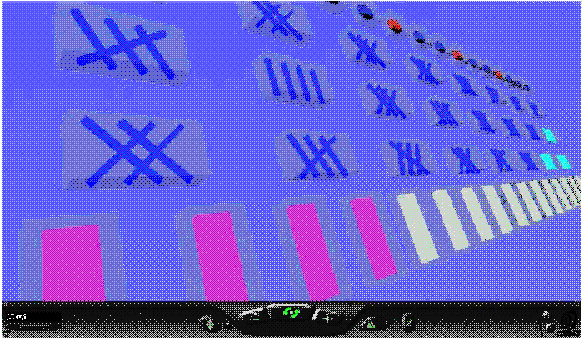
The simjava models
Contents
Motivation
The main reason for putting simulation models on the web is
to make them instantly accessible and runnable. This is
an interesting area which is only just starting to be explored.
Bringing simulation models into the open makes them less
mysterious and exposes their limitations.
This section presents several examples of multiprocessor
system simulations developed for the web, including
zoomable timing diagrams and graphs for displaying
results obtained on the fly.
The models
These simjava simulation models may be run within
a web browser supporting Java 1.1. They have been tested on
Sun's hotjava browser and Netscape's communicator version 4.04
preview release 2.
They won't run on earlier browsers or on a browser which does not
support Java 1.1 properly (like the standard Netscape 4.04).
3D network models
simjava may also be interfaced to 3D models constructed using
VRML2. Figure 4.6 shows a 3D visualisation of the
multistage switching network model. VRML allows more sophisticated
visualisations than using 2D pixmaps, and provides good support
for zooming in and out to obtain a visual feel for the behaviour
of particular entities, or the whole system. VRML is a very modular
language, and the effort required to build a 3D visualisation is
comparable to that required for the equivalent 2D model.

3D model of a multistage network
Summary
This section has presented versions of the multiprocessor testbed
implemented using the simjava simulation language. The main advantage
of using a web medium is accessibility of models. The obvious
disadvantage of using Java for simulation (compared to C++) is that
simulation run times are approximately 8 times slower than
C++~\cite{simjava}. However, this is offset by the ease of access to
simulation models (i.e. by clicking on a web link), and the support
for visualisation which is better in Java than C++.
Fred Howell
Last modified: Tue Juy 14 1998


